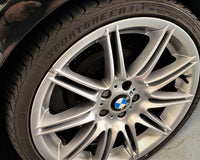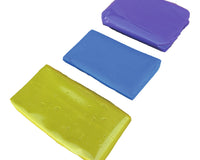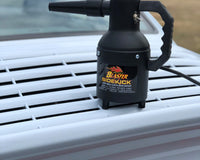For car owners who are passionate about the appearance of their vehicles, the terms "car wax" and "car polish" are quite familiar. These products play a significant role in enhancing the shine and overall condition of your vehicle's paintwork. However, there's often confusion about the distinction between car wax and car polish. In this comprehensive guide, we delve into the world of automotive care to unravel the key differences between car wax and car polish, helping you make informed decisions about the best way to care for your beloved ride.
Car Wax: The Ultimate Protector
Car wax is like the armor that shields your car's paintwork from the harsh elements it encounters daily. It is a protective, transparent layer that you apply after washing and polishing your vehicle. Car wax comes in various forms, including liquid, paste, and spray. Its primary purpose is to provide a protective barrier that shields your car's paint from environmental damage, such as UV rays, dirt, debris, and water.
The Benefits of Car Wax:
- UV Protection: Car wax helps shield your vehicle's paint from the harmful effects of UV rays, preventing color fading and deterioration.
- Water Beading: It promotes water beading, making it easier for water to slide off the surface and reducing the chances of water spots.
- Enhanced Shine: Car wax enhances the paint's depth and gloss, resulting in that coveted showroom shine.
- Paint Protection: It forms a protective layer that prevents minor scratches and contaminants from directly impacting the paint.
Car Polish: The Restorer and Refiner
Car polish, on the other hand, serves a different purpose. It's all about restoration and refinement. Car polish contains abrasive properties that help in removing imperfections from the surface of the paint. This includes minor scratches, swirl marks, oxidation, and other blemishes. Car polish is typically used before applying car wax to ensure that the paint's surface is smooth and free from defects.
The Benefits of Car Polish:
- Surface Smoothing: Car polish effectively smooths the surface of the paint, removing imperfections and restoring a sleek finish.
- Color Restoration: It helps bring out the true color of your car's paint by eliminating dullness and oxidation.
- Improved Adhesion: A polished surface provides better adhesion for the subsequent application of car wax, ensuring a more uniform and durable finish.
- Overall Enhancement: Car polish enhances the overall appearance of the paint, making it look refreshed and revitalized.
Understanding the Key Differences
To summarize the key differences between car wax and car polish:
- Purpose: Car wax is primarily a protector that shields the paint, while car polish is a restorer that corrects imperfections.
- Application Order: Car polish is typically used before car wax. Polishing is the preparation step to ensure the surface is in the best condition for waxing.
- Texture: Car wax is typically softer and smoother, while car polish contains abrasive compounds to remove imperfections.
- Outcome: Car wax enhances shine and protection, while car polish focuses on paint correction and restoration.
- Frequency: Car wax can be applied more frequently than car polish. Polishing is usually done as needed or during major detailing sessions.
Choosing the Right Product
The choice between car wax and car polish depends on the needs of your vehicle's paint. If your car's paint is in good condition and you want to maintain its shine and protection, car wax is your go-to product. On the other hand, if your paint has imperfections or lacks its original luster, car polish should be used to restore and refine the surface. The ideal approach for most car owners is to use car polish when needed, followed by regular applications of car wax to maintain the paint's condition and appearance.
Polishing for Paint Correction
Car polish is a go-to solution when your vehicle's paint requires correction. It's like giving your car's paint a spa treatment, removing blemishes and restoring its original luster. Polishing can eliminate minor scratches and swirl marks that diminish the overall appearance. While it might seem like a minor detail, the cumulative effect of these imperfections can significantly impact your car's shine.
Frequency of Use
Car wax can be applied more frequently than car polish. Waxing your car every few months helps maintain its protective layer and shine. In contrast, car polishing is typically done as needed, which means it's often part of a more detailed and less frequent maintenance routine. Over-polishing can lead to thinning the clear coat, so it's essential to use it judiciously.
Investing in the Right Products
When selecting car wax or car polish, invest in high-quality products. Cheaper alternatives may not provide the desired protection or correction. Look for well-known brands with a reputation for delivering excellent results. Quality products offer better durability, easier application, and a superior finish.
Combining Wax and Polish for Optimal Results
In many cases, using both car polish and car wax is the optimal approach to achieve the best results. Start with car polishing to address imperfections and prepare the paint's surface. Once you've achieved a smooth, blemish-free canvas, follow up with a layer of car wax to enhance the shine and provide an additional layer of protection. This combination ensures that your car looks its best while safeguarding the paint.

Professional Detailing vs. DIY
While many car enthusiasts prefer to perform detailing tasks themselves, it's worth noting that professional detailing services often use advanced products and techniques that can achieve exceptional results. Professional detailing can be especially beneficial if your car's paint requires extensive correction. In such cases, it might be more cost-effective and efficient to rely on the expertise of a professional detailer.
The Complex World of Car Wax
Car wax, in its various forms, has become an integral part of car care regimens worldwide. However, there's a surprising complexity when it comes to selecting the right car wax for your vehicle. From natural waxes like Carnauba to synthetic wax blends, the market offers a wide array of options. Natural waxes like Carnauba are derived from the leaves of a Brazilian palm tree and are celebrated for their deep, warm shine. On the other hand, synthetic waxes, often polymer-based, offer durability and longevity. The choice between the two often boils down to personal preference and the level of shine and protection you seek.
Deciphering the Car Polish Jargon
Car polishing, unlike waxing, delves into a realm filled with industry-specific jargon and an array of product variations. Polishing compounds are available in various levels of abrasiveness, often referred to as "cut." For instance, a heavy-cut compound is used for aggressive paint correction, effectively removing deep scratches and imperfections. In contrast, a light-cut or finishing polish is employed for a final, refined touch. These varying levels of abrasiveness are matched with specific pads that can further complicate the selection process. As a car owner, understanding the intricate world of car polishing can help you achieve the best results while avoiding unintentional damage to your car's paintwork.
Balancing Aesthetics and Preservation
The choice between car wax and car polish can sometimes come down to the balance between aesthetics and preservation. Car wax offers an immediate visual enhancement, creating a glossy, reflective surface that's sure to turn heads. It gives your vehicle that "just-waxed" look and maintains its beauty between washes. Conversely, car polish is primarily about restoring and preserving your car's paintwork. It may not provide the same instant gratification as car wax, but it plays a crucial role in maintaining the paint's health in the long run. By using both products in harmony, you can strike the perfect balance between aesthetics and preservation, ensuring that your car looks stunning and remains in excellent condition.
The Quest for the Perfect Finish
Whether you're a casual car enthusiast or a dedicated detailing professional, the quest for the perfect finish is a shared pursuit. Car wax and car polish are vital tools in this endeavor, helping you unlock the full potential of your vehicle's paintwork. Achieving the perfect finish involves selecting the right products, understanding your car's unique needs, and mastering the application techniques. It's a rewarding journey that combines art and science, and it often leads to a deep sense of satisfaction as you witness your car transform into a polished gem, reflecting your dedication to automotive excellence.
Conclusion
In the world of automotive care, knowing the difference between car wax and car polish is crucial for keeping your vehicle in pristine condition. Car wax is the protective shield that preserves and enhances your car's shine, while car polish acts as the magician that erases imperfections and brings out the full potential of your paint. Both products have their unique roles in maintaining a beautiful and well-protected vehicle, and by understanding their distinctions, you can make the best choices to ensure your car remains a source of pride and admiration for years to come.




